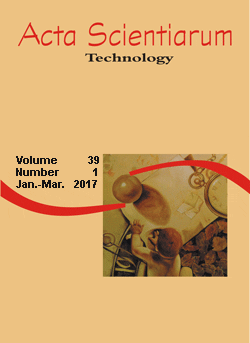<b>An optimization model for production planning in the drying sector of an industrial laundry
DOI:
https://doi.org/10.4025/actascitechnol.v39i1.29797Keywords:
goal programming, optimization, MILP.Abstract
In this work, an optimization model was developed for production planning in the drying sector of a real industrial laundry. Goal programming was used in order to minimize energy and labor costs, and to use of the full capacity of each piece of equipment, as far as possible. Constraints imposed were not to mix different types of products in each lot, dependence of lot assignment on the lots already assigned, the requirement to have a positive global contribution margin, and that each available dryer should be used within a specified capacity range. The independent variables were the numbers of items in each lot, according to product type. The Mixed Integer Linear Programming model developed was solved using GAMS and was applied to an industrial laundry located in Maringá, Paraná State, Brazil. The study demonstrated that it was possible to establish plans for efficient production and optimal allocation of resources. The existing global contribution margin of the industrial laundry ($295,405.50) was significantly smaller than the one that could be achieved with optimal operation ($647,770.00), because the existing operation did not make use of full capacity. The tool developed proved to be useful for assisting production planning in this kind of industrial process.
Â
Downloads
Downloads
Published
How to Cite
Issue
Section
License
DECLARATION OF ORIGINALITY AND COPYRIGHTS
I Declare that current article is original and has not been submitted for publication, in part or in whole, to any other national or international journal.
The copyrights belong exclusively to the authors. Published content is licensed under Creative Commons Attribution 4.0 (CC BY 4.0) guidelines, which allows sharing (copy and distribution of the material in any medium or format) and adaptation (remix, transform, and build upon the material) for any purpose, even commercially, under the terms of attribution.
Read this link for further information on how to use CC BY 4.0 properly.















8.png)




